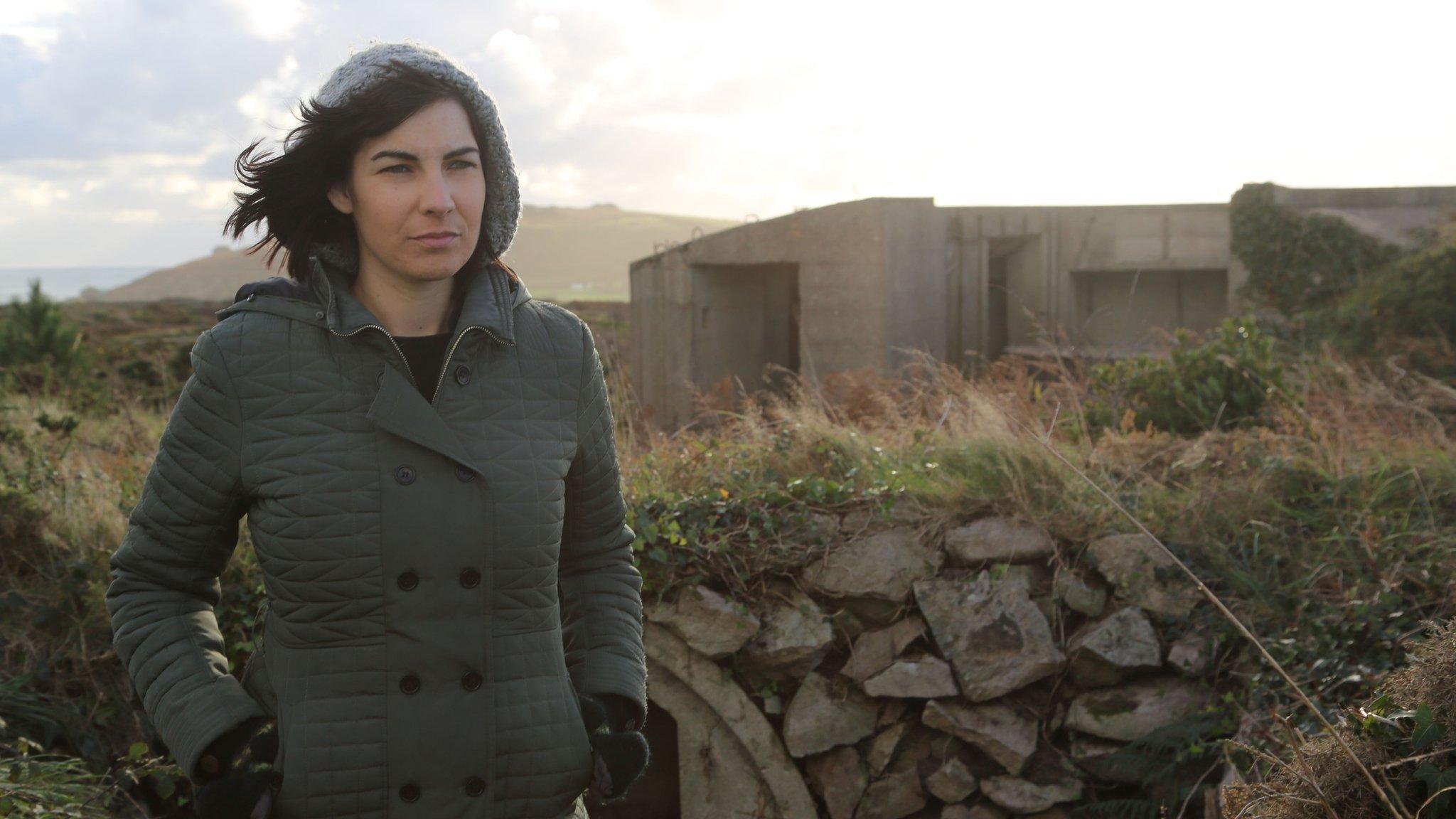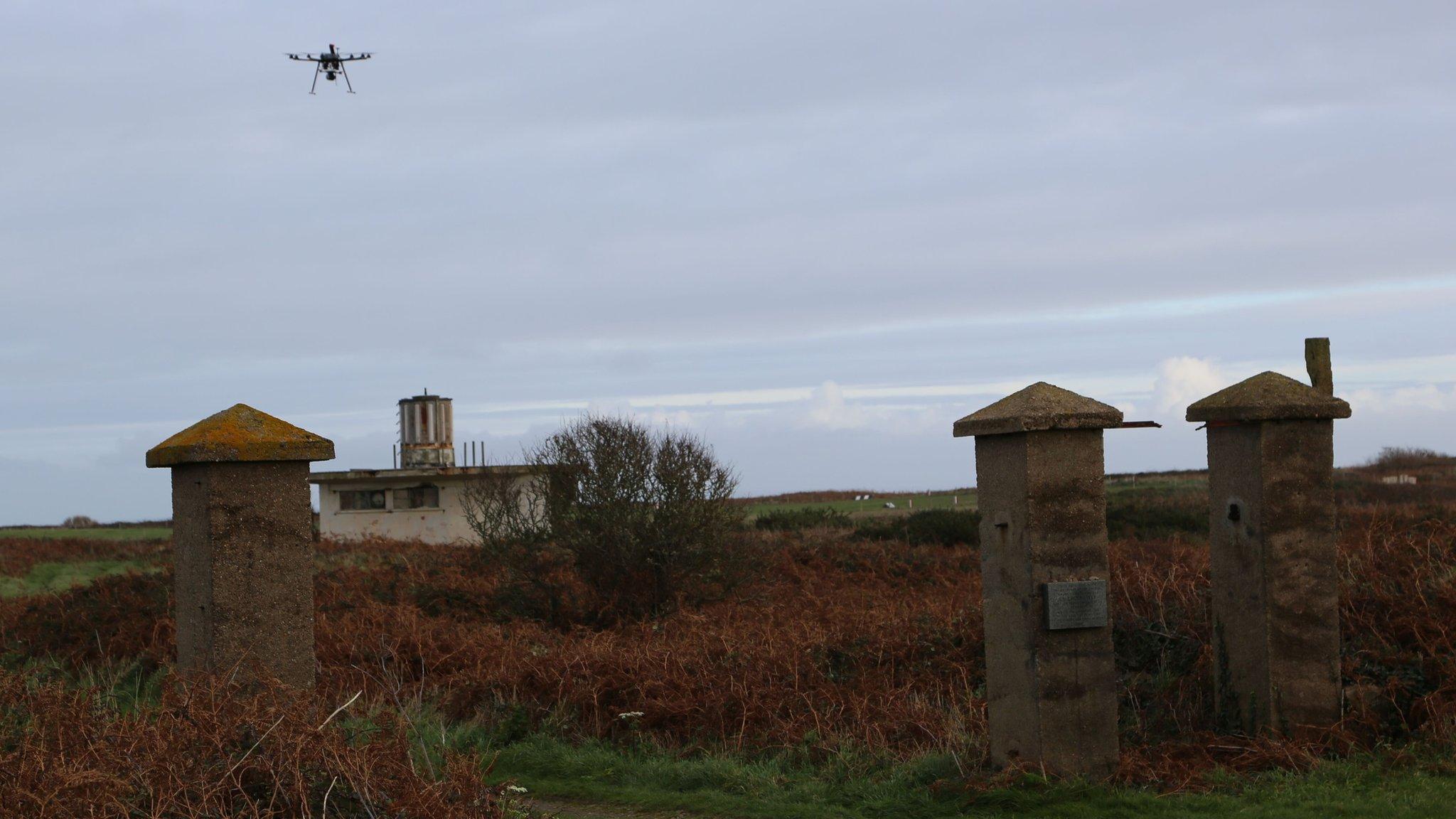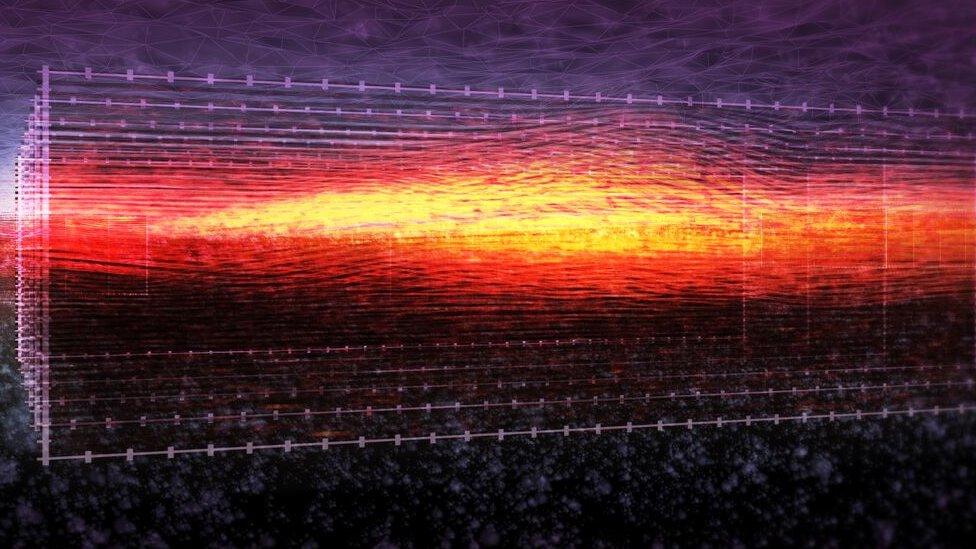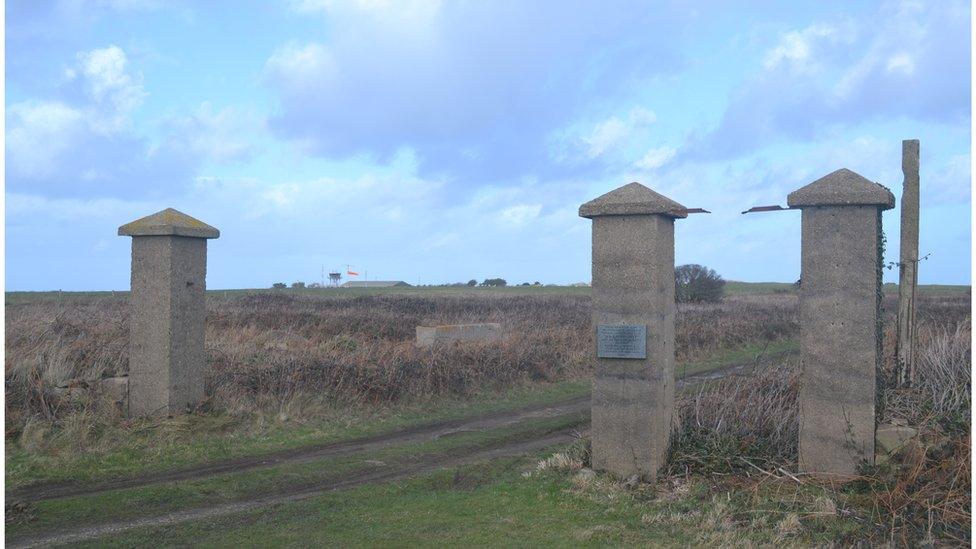'Twice as many' as previously thought died in concentration camps
- Published

Professor Caroline Sturdy Coles, a forensic archaeologist, has been researching the camps for almost a decade
Almost twice as many slave labourers may have died on Alderney in World War Two as previously estimated.
According to a new study at least 700 people died in Nazi prison camps during the occupation of the island.
Professor Caroline Sturdy Coles calculated the figure by comparing recorded deaths with aerial drone surveys of unidentified graves.
The graves were located using radar technology to create 3D terrain maps and identify evidence of burial sites.

A survey drone over the remains of the main gates of the concentration camp
Alderney was home to several labour camps as well as a concentration camp called Lager Sylt, which housed thousands of slave labours between 1940 and 1945.
The island was given the codename "Adolf Island" and was part of a "network" of wartime prison camps, with prisoners brought there from 27 countries.
Professor Sturdy Coles described the estimate as "very conservative", given the difficulty of identifying prisoners in wartime records.
The official figure of deaths on the islands is 389, which came from exhumations of marked graves in the 1960s.

3D survey of the abnormal terrain at one of the sites
She alleged that her work had come up against "hostility" on the island, including the from the Alderney government which she said had refused a permit for researchers to excavate some of the sites, forcing them to rely on "non-invasive" methods of analysis.
A spokesperson for the States of Alderney said it welcomed research and excavation, acknowledging that it was probable that there were "undiscovered burials", but that there was no "definitive account" of what had happened.
The States declined to comment on the specifics of Professor Sturdy Coles' research.
- Published20 October 2017

- Published9 May 2017
